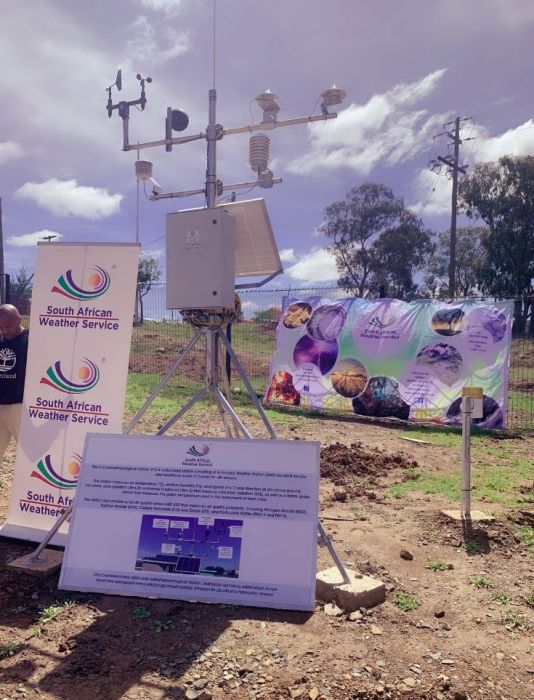



The Department of Science and Innovation (DSI) and its partners, including the Department of Basic Education and the Eastern Cape Department of Education, have launched a state-of-the-art science center equipped with advanced green technologies in Cofimvaba, Eastern Cape, South Africa. The Minister of Higher Education, Science, and Innovation, Dr. Blade Nzimande, and the Premier of the Eastern Cape, Oscar Mabuyane, along with other delegates, officially opened the facility on October 6, 2021.
One of the featured exhibits was a biometeorological station designed and built by Campbell Scientific Africa (CSAF). Grade 11 learners were happy to have a science center in their community that would link what they were being taught at school with the real world. The facility will assist and encourage learners from 26 high schools in the district to study science and technology.
“The project was aimed at improving education in rural areas by piloting technological innovation for water and sanitation, energy, nutrition, and health. This science centre will be an educational facility that will house interactive exhibits and use a hands-on approach to enable the people of Cofimvaba and the surrounding villages to experiment and engage with science. It is an expression of bringing science to the people, so we also enhance the prospects for grassroots innovation. The centre will also be an integral part of the infrastructure for science communication,” said Nzimande.
The science facility not only demonstrates technology, but also incorporated the latest sustainable technologies throughout the design process. The building will achieve beyond net-zero energy and water through the selection and combination of technologies to maximize the building’s performance. This means that it will produce more energy on site annually (through solar panels on the rooftop and small-scale wind turbines) than it consumes—one of only a handful of buildings in South Africa to achieve this. In addition, the building relies on a hybrid water supply, reducing its dependence on the grid by harvesting rainwater and recycling gray water for toilet use. Built using a light steel frame and insulated concrete composite, the structure is also HVAC‑free, depending on solar chimneys for its heating and cooling. The Intsika Yethu Local Municipality donated the land on which the center was built.
Katlego Ncongwane, Lead Scientist of Health Application at the South African Weather Service (SAWS), spearheaded one of the scientific innovations that is part of this center: the biometeorological station. Campbell Scientific equipment used for this station include the following: CR1000X Measurement and Control Datalogger, 03002-L Wind Sentry Set, HygroVue™5 Digital Temperature and Relative Humidity Sensor, BLACKGLOBE-L Temperature Sensor for Measuring Heat Stress, and GPS16X-HVS GPS Receiver with Integrated Antenna. The Cofimvaba biometeorological station forms part of the newly established biometeorological network of stations in Keimoes, Mahikeng, and Thohoyandou that offers integrated weather monitoring and provides a holistic perspective of health risks. The network of biometeorological stations is one of many networks that CSAF has developed.